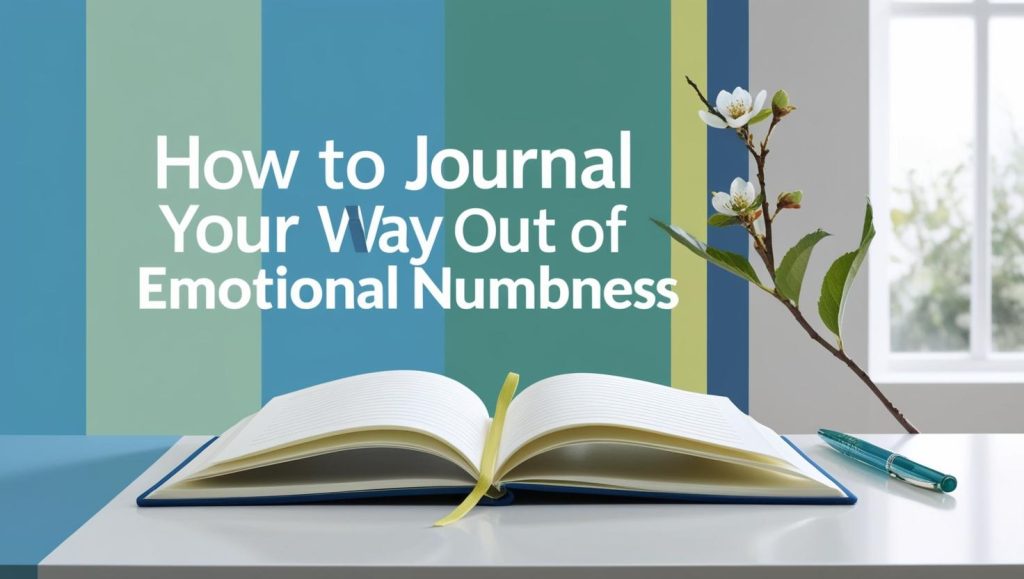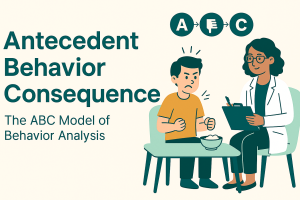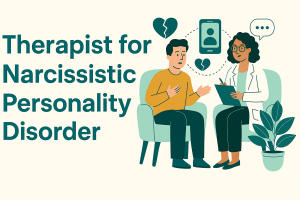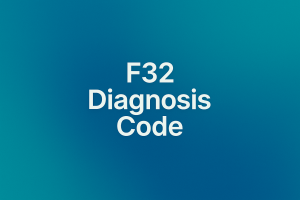What Is Emotional Numbness?
Have you ever sat in a moment that should’ve felt something—anything—and instead, you felt… nothing? Not sad. Not angry. Not relieved. Just blank? That’s emotional numbness.
Emotional numbness is like your feelings hitting a pause button. You go through the motions of life—school, work, relationships—but it’s like watching it all happen through a screen.
You’re detached from yourself. The highs aren’t high, the lows aren’t low, and everything feels muted.
It can be deeply frustrating. You want to feel something, to cry, to laugh, to connect—but your emotional volume is stuck on mute. And what’s worse? Most people don’t understand it.
They think you’re cold, ungrateful, or lazy. But emotional numbness isn’t a character flaw—it’s a symptom. A protective mechanism your brain uses to survive overload, trauma, depression, or long-term stress.
The good news? You can reconnect with your emotions gently and gradually. And one of the most accessible, science-backed tools for doing that is journaling.
Why Journaling Is a Powerful Tool for Reconnection
Journaling is like a flashlight in the dark tunnel of numbness. It helps you:
-
Slow down
-
Notice what’s really going on
-
Give voice to the silence inside
Even when you feel nothing, writing helps you track, translate, and eventually awaken your inner emotional life. It gives shape to what’s vague. It validates what’s invisible. It’s not about writing perfectly—it’s about showing up to yourself with honesty.
This article will walk you through how journaling helps and give you 7 specific techniques that can guide you back to your feelings—even if you’re completely numb right now.
Understanding Emotional Numbness
Symptoms and Signs
You might be emotionally numb if you experience:
-
Feeling emotionally “flat” or robotic
-
Difficulty crying, laughing, or getting excited
-
Feeling disconnected from loved ones
-
Indifference toward things you used to care about
-
Avoiding deep emotional conversations
-
A sense of being “spaced out” or watching your life happen without you
-
Difficulty making decisions due to emotional indifference
This doesn’t mean you’re broken. It means your emotional system is trying to protect you from overload. It’s doing its job—just a little too well.
What Causes It—Trauma, Stress, Depression, Alexithymia
Emotional numbness can stem from:
-
Trauma or PTSD: Your brain shuts down emotional access to avoid flashbacks or pain.
-
Depression: Everything feels heavy, gray, and meaningless. Emotions become distant.
-
High chronic stress: Your nervous system stays in “survival mode,” skipping emotional processing.
-
Alexithymia: A condition where people have difficulty identifying and expressing emotions.
-
Burnout: Emotional exhaustion from caregiving, overwork, or ongoing crisis.
In all these cases, journaling creates a low-pressure space to check in with your inner self—no judgment, no rush, just reflection.
How Journaling Helps Unlock Emotion
Putting Words to Feelings When You Feel Nothing
Even if you can’t feel emotions, you can write about:
-
What you think you might be feeling
-
What your body is doing
-
What happened today
-
What you wish you could feel
You’re not writing for the emotion—you’re writing toward it. This isn’t about pouring your heart out. It’s about inviting your emotions back slowly, like coaxing a shy animal out of hiding.
Over time, you’ll notice:
-
Small words or feelings showing up in your writing
-
Patterns in your moods or behaviors
-
A growing sense of connection to your own story
Creating Safe Space to Process Without Judgment
The best thing about journaling? It doesn’t judge.
Unlike talking to people (who might not get it), a journal:
-
Doesn’t interrupt
-
Doesn’t rush you
-
Doesn’t expect you to explain
This psychological safety helps you rebuild trust with your own inner world. You don’t have to say the “right” thing—you just have to write something.
And if “something” starts with “I feel nothing today,” that’s a powerful place to begin.
7 Journaling Techniques to Reconnect with Emotions
1. The “What Happened?” Method
Recounting Events Without Pressure to Feel
When you don’t know what to feel, start with what you know: the facts. Write down:
-
What happened today, hour by hour
-
What you saw, heard, ate, or did
-
Who you interacted with
-
What they said and how you responded
This is helpful because it removes the pressure to “get emotional.” You’re simply logging events. But as you write, your subconscious may sneak in clues—small emotional words, patterns, reactions.
Example:
“Woke up late. Ate toast. Didn’t really taste it. Talked to Sarah—she seemed upset, but I didn’t ask why. Didn’t feel like dealing with it.”
That “didn’t feel like dealing with it” is gold—it’s a window. Over time, these observations become emotional breadcrumbs you can follow.
2. The Body Scan Log
Using Sensations as Emotional Clues
Sometimes, your body knows what your brain doesn’t. Use journaling to track physical sensations that may point to emotions underneath.
Try this structure:
-
“Today, I noticed tension in my [jaw/shoulders/stomach].”
-
“My breathing felt [shallow/deep/held].”
-
“I had a headache when I [talked to X/thought about Y].”
Then, ask:
-
“What might this tension be about?”
-
“If this tightness had a feeling, what would it be?”
-
“What does my body want me to know?”
This journaling method helps you become fluent in your body’s language—because physical symptoms often hold emotional messages.
3. Sentence Starters and Prompts
Journal Prompts That Guide Gentle Exploration
Use open-ended, non-threatening prompts like:
-
“I feel _____, and that’s okay.”
-
“I wish I could say _____.”
-
“If I could feel anything right now, I’d want to feel _____.”
-
“When I think about the word ‘joy’ (or anger, or sadness), I picture _____.”
-
“Something I’m not saying out loud is _____.”
Prompts are like emotional training wheels. They give your brain a structured pathway when it’s too frozen or overwhelmed to start from scratch.
Don’t worry if your answers feel flat or weird. That’s still progress. You’re building the bridge from numbness to awareness—one sentence at a time.
4. The Color Code System
Associating Moods with Colors to Bypass Words
If words feel hard, use color instead.
Each day, pick a color that matches your mood:
-
Red: Angry or agitated
-
Blue: Sad or withdrawn
-
Yellow: Calm or content
-
Gray: Numb or disconnected
-
Green: Hopeful or grounded
Then write:
-
“Today I feel like the color ____.”
-
“This color reminds me of ____.”
-
“If this color could talk, it would say ____.”
Color bypasses the analytical brain and taps into visual and emotional intuition. Even scribbling with colored markers can release stuck energy when words won’t come.
5. Emotional Vocabulary Builder
Learning the Language of Feeling, One Word at a Time
If part of your numbness is tied to alexithymia or emotional illiteracy, build a word bank.
Each day, pick:
-
One feeling word (look up lists online or use a mood app)
-
Define it in your own words
-
Write about a time you might’ve felt it—or imagine what it would be like
Example:
“Restless – like when you can’t sit still but don’t know why. I might feel this when I’m in a crowded room. Or maybe I did this morning?”
You’re not just journaling—you’re training your brain to notice and name feelings it once ignored.
6. The “Parts of Me” Dialogue
Speaking to Numbness Like a Character
If emotional numbness feels like a separate part of you—like a wall, a fog, or a version of you that’s “switched off”—try writing a dialogue with it.
Journal like this:
-
“Dear Numbness, why are you here?”
-
“What are you protecting me from?”
-
“What do you need from me to let go?”
Then respond:
- “Dear [Your Name], I’m not here to hurt you. I’m here to keep you from falling apart. You weren’t ready to feel yet—but I think you might be now.”
This exercise externalizes numbness, giving it voice and purpose, instead of treating it like an enemy. It builds self-compassion and helps you reconnect with yourself, one part at a time.
7. Visual Journaling
Drawing, Scribbling, or Using Stickers to Express Mood
Words aren’t the only way to journal.
Try:
-
Doodling how you feel (or don’t feel)
-
Drawing a weather map for your mood (cloudy, stormy, sunny?)
-
Using stickers, washi tape, or torn paper to create a “feeling collage”
-
Creating a “before and after” page: one side numb, one side hopeful
Visual journaling activates a different part of the brain than writing, often unlocking emotions that are buried or frozen. Plus, it’s a gentle, creative way to engage without pressure to “say the right thing.”
You might be surprised how a messy sketch says more than a full paragraph.
Tips for Staying Consistent
Low-Pressure Routines and Short Sessions
The goal isn’t to write a novel—it’s to make contact with yourself.
Keep it simple:
-
Set a 5-minute timer
-
Use 1 prompt per day
-
Journal in a quiet, cozy space
-
Keep your journal visible as a reminder
If writing daily feels too much, try 3x per week or just weekends. The key is showing up, not being perfect.
Pair journaling with:
-
Morning tea or coffee
-
Bedtime wind-down
-
Your favorite playlist
Make it a ritual, not a chore.
How to Journal Without Overthinking
If your inner critic shows up (“This sounds dumb,” “What’s the point?”), write that down. Let the critic speak—and then write your response:
- “You’re right, this feels weird. But I’m doing it anyway.”
Perfection isn’t the goal. Presence is.
Remember: even one sentence a day is movement toward feeling again.
What If It’s Not Working?
Knowing When to Pause or Switch It Up
If journaling starts to feel:
-
Frustrating
-
Emotionally empty
-
Repetitive or stale
…it might be time to switch techniques. Try visual journaling. Try voice memos. Try writing in third-person or from the future.
Or just take a break and come back with fresh eyes. Sometimes, the act of trying is enough to crack something open, even if the words aren’t flowing yet.
Combining Journaling with Therapy or Mindfulness
Journaling works best when paired with:
-
Therapy: Bring journal entries to your sessions for deeper insight
-
Mindfulness: Use breathwork or body scans before you write
-
Creative expression: Pair with art, music, or movement
Healing emotional numbness isn’t just about journaling—it’s about creating emotional safety and curiosity. Journaling is one of the tools in that process, not the whole toolbox.
Conclusion
Emotional numbness may feel like your mind is locked in a fog, like life is happening to you instead of with you. But journaling is your way of slowly clearing that fog—one word, one sentence, one page at a time.
Even when you can’t feel, journaling gives you a bridge back to yourself. You don’t have to write profound things.
You don’t need to cry, have a breakthrough, or suddenly feel alive. All you have to do is show up, write honestly, and give your emotions the invitation to return.
Some days will feel flat. Some entries may be a single sentence. But over time, your numbness may begin to thaw. You’ll start to see patterns, notice feelings stirring beneath the surface, and develop a deeper connection with yourself than you ever thought possible.
Because even when you feel nothing—you’re still here. And that’s a powerful place to begin.
FAQs
Is it normal to feel nothing while journaling?
Yes. Journaling is a tool for building emotional awareness—not proof that you already have it. Feeling numb while writing is completely normal. Keep going—emotions often return gradually.
How long does it take for journaling to work?
Everyone’s timeline is different. Some people feel connected after a few entries, while others take weeks or months to notice emotional shifts. Focus on the process, not the outcome.
Can I journal if I don’t know what to say?
Absolutely. Use prompts, write a list of what happened today, describe physical sensations, or just repeat “I don’t know what to say” until something else comes out. That’s valid journaling.
What’s the best time of day to journal for emotional awareness?
Whenever you feel most mentally clear or emotionally quiet. For many, that’s early morning or right before bed. Choose a time that feels easiest to stick with consistently.
Should I keep or throw away emotional journals?
Totally up to you. Some people keep them as proof of growth; others throw them away as emotional release. If privacy is a concern, try journaling digitally with a password or using an erasable notebook.
Learn More
1. The Science of Journaling for Emotional Health
Explore research-backed benefits of journaling from Positive Psychology, including how it rewires emotional processing.
2. Alexithymia & Emotional Numbness: Causes and Coping
Psychology Today’s guide to understanding emotional numbness and therapeutic strategies.




